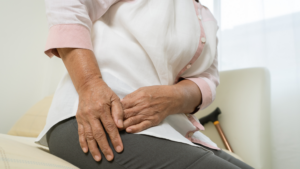Winter sports are a popular and exhilarating way to enjoy the colder months. However, they also come with the risk of injuries. Understanding the risks associated with winter sports is crucial for ensuring a safe and enjoyable season. In this article, we will explore common types of winter sports injuries, discuss proper warm-up and stretching techniques, provide tips for maintaining proper form and technique, discuss how to recognize and respond to injuries, and offer guidance on rehabilitation and recovery after a winter sports injury. By following these essential tips, you can minimize the risk of winter sports injuries and enjoy a safe and injury-free season.

How to Prevent Winter Sports Injuries
Understanding the Risks of Winter Sports Injuries
Winter sports activities such as skiing, snowboarding, ice skating, and ice hockey can be thrilling and challenging. However, they also involve a certain degree of risk. It is essential to understand the common types of injuries that can occur during these activities to be better prepared and take preventive measures.
Common winter sports injuries include sprains, strains, fractures, dislocations, and concussions. These injuries can result from falls, collisions, overexertion, or improper technique. It is important to recognize that these activities put stress on various parts of the body, including the ankles, knees, wrists, and head. Proper equipment, technique, and preparation can significantly reduce the risk of these injuries.
Common Types of Winter Sports Injuries
Winter sports injuries can vary depending on the activity and the surrounding circumstances. In skiing and snowboarding, common injuries include sprained ligaments, broken bones, and head injuries. Ice skating injuries often involve ankle sprains or fractures due to falls or collisions. Ice hockey can lead to various injuries, including concussions, broken bones, and muscle strains.
To prevent these injuries, it is crucial to wear appropriate protective gear, such as helmets, wrist guards, and knee pads. Additionally, learning and practicing proper techniques for each sport can significantly reduce the risk of injury. It is also important to be aware of one’s limits and not overexert oneself, as fatigue can lead to poor judgment and increased risk of accidents.
Proper Warm-up and Stretching Techniques
Proper warm-up and stretching techniques are essential before engaging in any winter sports activity. They help prepare the body for the physical demands of the sport, increase flexibility, and reduce the risk of muscle strains and sprains.
Before starting, it is important to engage in a light aerobic activity, such as jogging or jumping jacks, to increase blood flow to the muscles. This can be followed by dynamic stretches that mimic the movements involved in the sport, such as lunges or leg swings. It is crucial to focus on all major muscle groups, including the legs, arms, and core.
Static stretching, where stretches are held for 15-30 seconds, should be done after the activity to improve flexibility and prevent muscle tightness. It is important to avoid bouncing during stretches, as this can lead to injury. Instead, stretches should be performed in a controlled manner, with a focus on breathing deeply and relaxing into the stretch.
Tips for Maintaining Proper Form and Technique
Maintaining proper form and technique is crucial for preventing winter sports injuries. Each sport has its own set of specific techniques that should be learned and practiced to reduce the risk of accidents.
In skiing and snowboarding, proper body position and balance are essential. It is important to keep the knees slightly bent, the weight centered over the skis or snowboard, and the arms forward for balance. Learning how to fall safely can also help prevent injuries, as it is inevitable that falls will occur.
For ice skating, maintaining proper balance and posture is key. The knees should be slightly bent, the back straight, and the arms relaxed but ready for balance. It is important to focus on the gliding motion and avoid excessive leaning or jerking movements that can lead to falls.
In ice hockey, proper body positioning, skating technique, and stick handling skills are crucial. Wearing protective gear, such as helmets and padding, is essential for preventing injuries due to collisions or falls.
Recognizing and Responding to Injuries
Despite taking preventive measures, injuries can still occur during winter sports activities. It is important to be able to recognize the signs of an injury and respond appropriately to minimize further damage.
Signs of an injury may include severe pain, swelling, deformity, inability to move the affected body part, or loss of consciousness. In the case of suspected head or spinal injuries, it is crucial not to move the injured person and to seek immediate medical attention.
For less severe injuries, the RICE method can be applied. This stands for Rest, Ice, Compression, and Elevation. Resting the injured area, applying ice to reduce swelling, using a compression bandage to support the injured area, and elevating the injured limb can help reduce pain and promote healing. However, it is important to seek medical attention if the pain or swelling persists or if there is any concern about the severity of the injury.
Rehabilitation and Recovery after a Winter Sports Injury
After an injury, proper rehabilitation and recovery are crucial for a safe return to winter sports activities. This involves working with healthcare professionals, such as physical therapists or sports medicine specialists, to develop a personalized rehabilitation plan.
Rehabilitation may include exercises to improve strength, flexibility, and balance, as well as techniques to enhance proprioception and coordination. It is important to follow the prescribed rehabilitation program diligently and gradually increase the intensity of activities to prevent reinjury.
Additionally, it is crucial to listen to the body and give it enough time to heal. Rushing back into winter sports activities too soon can lead to further injury and setbacks in the recovery process. Patience, consistency, and proper guidance are key to a successful rehabilitation and full recovery.
Enjoying a Safe and Injury-Free Winter Sports Season
Winter sports can be a thrilling and enjoyable way to embrace the colder months. However, it is essential to understand and mitigate the risks of winter sports injuries. By following the tips outlined in this article, such as understanding the risks, wearing appropriate protective gear, practicing proper warm-up and stretching techniques, maintaining proper form and technique, recognizing and responding to injuries, and engaging in proper rehabilitation and recovery, you can minimize the risk of injuries and enjoy a safe and injury-free winter sports season.
Remember, prevention is always better than cure. So, take the necessary precautions, stay within your skill level, and have fun while staying safe on the slopes or rink.
Stay safe this winter sports season by incorporating these essential tips into your routine. Prioritize your safety and the safety of others by being prepared, wearing appropriate protective gear, and practicing proper techniques. Enjoy the exhilaration of winter sports while minimizing the risk of injuries.
Fill out the form below to contact the team at Progressive Pain Management. If you experience a winter sports injury this season, our team of experts can help.
We all make New Year’s resolutions – from eating healthier to getting more sleep. However, for those of us living with chronic pain, a different kind of resolution is needed. Living with persistent pain can be emotionally and physically draining, which makes setting realistic goals even more important. Read on to learn how you can start the year by setting achievable resolutions to help manage your chronic pain that could improve your quality of life this new year!

Managing Chronic Pain in the New Year
How Chronic Pain Can Negatively Affect Your Life
Chronic pain can have a significant impact on your day-to-day life. In addition to physical discomfort, it can also affect people emotionally and mentally. For example, chronic pain can lead to feelings of depression, anxiety, and stress.
Therefore, it’s important to be aware of how chronic pain is potentially affecting other aspects of your life to make meaningful changes this year.
Lifestyle Changes and Resolutions for Managing Chronic Pain
Get Enough Sleep
Aim for 7–8 hours each night. Chronic pain can make it difficult to get quality sleep, So it’s essential to create a calming environment and avoid blue screens before bedtime.
Move More
Make sure you’re moving every day. Even if it’s just a few minutes of light stretching, this can help prevent stiffness and improve your range of motion.
Eating Healthy
Eating healthy is vital for everyone, but even more so for people with chronic pain. This includes eating foods that reduce inflammation, like leafy greens, fatty fish, nuts, and seeds.
Reduce Stress
Stress can worsen existing pain, so take some time each day to relax and do something you enjoy. Whether it’s reading a book or listening to music, find something that helps you decompress.
Incorporate Mindfulness
Mindfulness exercises can help manage stress and improve awareness. Try breathing techniques or guided meditation audio tracks that work to bring the body and mind back into balance.
Speak Up
Don’t be afraid to speak up about your chronic pain with your doctor or loved ones. They can offer support, advice, and resources that you may not know about on your own.
Talk to Your Doctor about Alternative Treatments
Acupuncture, massage therapy, TENS machines, and other alternative treatments may be beneficial in managing chronic pain symptoms. So, make sure you speak with your doctor about any options that could work for you.
Get Outside
The benefits of spending time outdoors are endless- from improving mood to boosting energy levels. Plus, getting exposure to sunlight can help naturally boost Vitamin D levels which helps in managing chronic pain.
Make Time for Yourself
The key to managing chronic pain is understanding that self-care is not selfish. Making time for activities you enjoy, whether watching a movie or going for a walk, can help reduce stress and improve overall well-being.
Ways to Prevent Chronic Pain
- Prioritize your activities: Sometimes, it can be difficult to manage chronic pain while also trying to keep up with your obligations. Instead of overwhelming yourself, prioritize the most important tasks and break them down into smaller steps that you can do over time.
- Ask for help: You don’t have to face chronic pain alone; reach out for help from family and friends when needed. They may be able to offer support or provide resources that can help manage your symptoms more effectively.
- Consider counseling: Talking about how pain affects your daily life can help reduce stress and anxiety levels, which are known to increase discomfort levels. If this option is right for you, seek out a qualified mental health professional who can help.
- Stay active: Exercising is an excellent way to manage chronic pain. However, finding an activity that works for your body is essential. Low-impact exercises like yoga or swimming are great options that won’t cause further irritation.
- Track progress: Keeping track of how you feel each day can help you identify patterns and better understand what works best to manage your chronic pain. Writing down moods, symptoms, and activities done throughout the day can give valuable insight into what might be causing flare-ups.
Live a Free Life from Chronic Pain
If you or someone close to you suffers from chronic pain, the New Year is a perfect time to start working on some resolutions. Chronic pain can negatively affect every aspect of your life, from physical activities to mental health. There are things you can do in the New Year to help relieve chronic pain, like stretching and exercising regularly, managing stress levels, getting enough sleep, and eating healthy.
If you need help developing a plan to relief or prevent chronic pain, contact us at Progressive Pain Management. We provide available solutions that work with your body’s needs. Please fill out the form below to get in touch with us.
Since the dawn of time, there is one thing that has remained the same: pain. Humans have always experienced pain, and we always will. There is nothing more useful and treacherous than pain. In a sense, it teaches us what is hot, sharp, poisonous, and alerts our body of injury. But pain is dreadful to deal with on a daily basis.
However, managing pain is still a relatively new topic. The field of pain management has only been around since the 1960s, so it is evolving at record speeds. That’s not to say there haven’t been ways to treat pain, but historically, every method has been temporary or handled in either acute care or pain during death.

The Evolution of Pain Management
The History of Pain Management
In the 1600s, doctors treated patient’s pain by giving them opium. By the 1800s, ether and chloroform were introduced as anesthetics for surgery. This also caused doctors to question the ethics of performing surgery on unconscious patients. Patients, however, thought the use of medication was a godsend. Because patients would be under the influence of these anesthetics for a longer period of time, doctors could not resist the temptation to attempt more complex surgeries and procedures.
In the 1900s, morphine and heroin entered the scene as pain medications. This was also the start of doctor’s worrying about addiction while ultimately wanting to improve their patient’s quality of life.
Chronic pain became a topic worth mentioning, because it was previously treated acutely (injury or post-surgery pain) or relating to death. The idea that recurring pain in patients was an actual condition had been ignored, or the patients were considered delusional. If they refused medication for their pain, patients were referred to psychotherapy or even neurosurgery.
By the 1970s, the field of pain management had been established, with a research journal and association – International Association for the Study of Pain. The concept of interdisciplinary teams were introduced and found to be effective at treating pain. In the 80s, well-known pain management physicians noticed a minor correlation between prescribed opioids and addiction, and pushed for the drugs to be used more in non-cancer pain patients. This lead to doctors prescribing the addictive drugs more liberally and with a backing from leading pharmaceutical companies, doctors did so guilt-free.
“The thing about opioids is they are very effective in interrupting and shutting off pain signals in the brain,” said Marcia Meldrum, a researcher of psychiatry and biobehavioral sciences at UCLA. “They are very, very effective. But they are also very dangerous.”
That didn’t last long. It turned out to be a driving factor in the opioid crisis that we are dealing with today. Many patients still see drugs as being the only way to manage their pain.
The Field of Pain Management
The International Association for the Study of Pain defines pain as “an unpleasant sensory and emotional response associated with actual or potential tissue damage or described in terms of such damage.”
Since the field of pain management was introduced, it has been growing at exponential rates. With this knowledge, research, and advances in technology, a variety of non-medication treatments have emerged.
Pain is processed in six steps – transduction, inflammation, conduction, transmission, modulation, and perception. Understanding these stages is important for physicians to know the best methods of treatment for your pain.
- Transduction – Receptors in the body translate a physical pain or injury to the brain.
- Inflammation – Trauma triggers the damaged cells to release an inflammatory substance that causes the area of pain to become red, swollen, and a lowered pain threshold.
- Conduction – Pain signals are conducted along nerve fibers, which determine the quality of the pain
- Transmission – Where one nerve pathway ends, neurotransmitters transmit the signal between a synaptic gap
- Modulation – This adjustment of pain is performed by an extensive antipain (antinociceptive) system. The limbic system acts as a gatekeeper for pain or stress. When the spinal cord is overstimulated, the body can become hypersensitive to pain.
- Perception – When the pain signals finally reach the brain through the thalamus, they’re directed toward the region of the brain that regulates sensation, autonomic nervous system, motor response, emotion, stress, and behavior. This determines the individual’s perception of pain.
Patients with chronic pain have reduced pain thresholds and therefore feel pain more intensely.
“Pain can make it impossible to live your life. You lose so much quality of life. So for many people, if the solution also means they may become somewhat dependent on a drug, they probably think, ‘Well, that would be better than this,’” said Meldrum. State laws have put a limit on opioid prescriptions so for many patients, they are unable to get their narcotic medications and in search of other ways to reduce their pain.
New Technologies for Treating Pain
New and innovative technology is emerging and thriving in the world of pain management, making it a very exciting time for pain doctors and their patients. Those suffering from chronic pain have options for managing their pain and better access to physicians who can treat them. The ability to treat pain without the use of medication is on the rise, a result of the opioid epidemic.
Neuromodulation is an alteration of the nerve activity by delivering electrical agents to a specific area. It can be used to treat chronic headaches to spinal cord injuries to urinary incontinence. It’s no wonder that with such a vast therapeutic scope, there is major growth in the industry. For each existing neuromodulation treatment, there are dozens of new ones on the horizon. Experimental treatments to relieve pain are being tested and researched.
Stem Cell Therapy is rapidly growing as more research becomes more readily available. Stem cell therapy is harnessing your body’s own cells and systems to effectively treat diseases and conditions. Your own cells are injected to the affected area, assisting in healing damaged tissue, ligaments, and even bone, while minimizing the need for surgery.
The use of Ultrasound in the medical field is not new, but using it for the purposes of pain management is still a relatively new concept for physicians. Ultrasounds have the ability to scan deep structures that aren’t visible on X-Rays. Ultrasound-guided procedures allow physicians to place needles for nerve block injections or other injections with complete accuracy. This allows treatments to be much more effective.
Because technology is moving at rapid speeds, treatments will continue to evolve as the field of pain management grows. Studies are more readily available, physicians are continuing education to remain up-to-date on the latest techniques and conditions, and treatment methods are becoming more and more state-of-the-art thanks to advances in technology. Learn how Progressive Pain Management is adapting to these changes and utilizing the most advanced technology and treatments to help their patients regain mobility, decrease pain, and improve their quality of life.
Winter is a fantastic season with white sceneries and joyous outdoor activities from ice skating, skiing, and snowballing to snowmobiling. While these activities are fun, they can strain your muscles, leading to injuries that can aggregate your back pain, making it not the best season for folks with back pain.
Acute back soreness, stiff joints, and muscle strain are a few unfavorable side effects that might result or worsen from engaging in intense winter activities and chores. Nevertheless, below is everything you need to know about winter and back pain.

Winter Activities that Worsen Back Pain
Winter Activities that can Worsen Back pain
Different activities in winter increase your risk of back pain. Here are some of these activities:
- Cleaning Your House
Deep cleaning during winter includes bending, scrubbing, lifting, and scooping, which can strain your back. Sometimes, you experience a pulled muscle when cleaning and do not realize it. As you continue cleaning, the muscles worsen, causing back pain.
- Shoveling
If you are not careful when shoveling snow off your driveway or walkways, it could cause more back pain. Heavy lifting and bending required for this task could strain the back muscles and result in more back discomfort.
- Winter Sports
Winter sports such as snowboarding and skiing can cause back pain. The heavy boots and skis can pressure the lower back, causing pain. Falling while skiing or snowboarding can also stress the spine and soft tissues around it, leading to more back pain.
How Cold Weather and Winter Activities can Worsen Back Pain
The cold winter weather worsens back pain through a process known as vasoconstriction. This occurs when blood vessels narrow down and divert the extra blood to vital organs such as the lungs, heart, and brain. This results in less blood flow in the tendons, ligaments, muscles, and spine.
Low blood flow in the spine causes it to become stiff and tight. It strains your back and pulls on sensitive nerves causing back pain. Engaging in strenuous activities such as gardening and cleaning during this time causes more pressure in the back, worsening your back pain.
How You Can Prevent Back Pain
You can prevent winter back pain in various ways. Here are some tips:
- Wear the Right Gear
When you’re outside, dress in several layers, preferably in comfortable, move-friendly clothing and equipment. The appropriate shoes will help protect you against accidents that could cause or worsen your back discomfort, such as falls, slips, and other mishaps.
- A Healthy Diet
A balanced diet rich in calcium and healthy minerals helps prevent back pain. Calcium is not only good for the bones but also the spine. Minerals such as magnesium are good muscle relaxants that help prevent back pain during cold weather.
- Exercise Your Body
Staying physically active relaxes your muscles and increases mobility. Reduced stiffness allows easy movement and flexibility even during the winter, preventing back pain.
Treatment Options for Winter Back Pain
There are different treatment options for winter-related back pain. Here are some treatment options:
- Cold therapy
The use of cold therapy is a highly effective treatment for various physical ailments, including back pain, swelling, and muscle strains. There are many ways to apply it, such as ice massages, coolant sprays, ice packs, and ice baths. These are among the easiest, most effective treatments for reducing back pain and swelling.
- Heat therapy
Steamed towels, hot baths, and moist heating packs effectively reduce back pain. They offer temporary back relief by relieving tension and stiffness in the back.
- Interventional procedures and therapies
Pain procedures such as injections and medications are effective in treating back pain. Therapies such as acupuncture, chiropractic services, and physical therapy also help relieve back tension and treat back pain.
Get Treatment for Pain
If you are experiencing winter back pain, you should seek professional help as soon as possible before it worsens. At Progressive Pain Management, we focus on interventional effective pain procedures and advanced therapies to relieve back pain. Contact us today or fill out the form below to request an appointment.
Do you experience pain when you stand up out of a chair? Do you feel a dull or sharp pain in your lower back? You may be experiencing Sacroiliac Joint (SI) pain. This condition is very common – in fact, 15-30% of people who suffer from this kind of pain have joint problems they may not know about.
The good news is that numerous treatments are available to relieve you of this pain. But what is the SI Joint? And what causes this kind of pain?
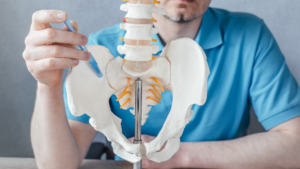
Sacroiliac Joint Pain Causes and Treatment
What is the Sacroiliac Joint?
The sacroiliac joints are in your lower back, sitting on both sides of your spine. Their main job is to carry the weight of your upper body when you stand, walk, or shift your weight to your legs.
Although the pain typically starts in your lower back, if often moves to your buttocks, thighs, or upper back.
Causes of Sacroiliac Joint Pain
Because the SI joints carry the weight of your upper body, there are multiple causes for why you experience pain.
- Traumatic Injury – An injury like a fall or being in a car accident are common reasons for having SI joint pain. The force from this kind of injury strains the ligaments around the joint. If the ligaments aren’t treated correctly, they can tear and loosen the SI joints. When the joints move around too much from being loose, the SI joint can cause chronic pain.
- Arthritis – A specific kind of arthritis called ankylosing spondylitis affects the spine. It causes pain in your hips and buttocks.
- Pregnancy – Women have a higher chance of experiencing SI joint pain during pregnancy and childbirth. The same hormones that prepare the pelvis for childbirth loosen ligaments around the SI joint. This causes aches and pains that are common in pregnancy. The added weight during pregnancy also affects your SI joint.
Symptoms of Sacroiliac Joint Pain
SI joint pain can be hard to tell apart from other types of lower back pain. Because the pain can spread to your upper back, thighs, and buttocks, the pain could be confused with other conditions.
The main symptoms to look for are:
- Lower back pain
- Thigh pain
- Discomfort and pain after sitting
- Hip/Buttocks pain
It’s common to have after sitting for a long time, but SI joint pain also happens after running, climbing stairs, or taking large strides.
Diagnosing Sacroiliac Joint Pain
SI joint pain can disguise itself as different types of pain, like a herniated disc or facet joint arthritis. Doctors perform a series of tests to determine if you are suffering from SI Joint Syndrome. Pain during these tests helps the doctors learn more about where the pain is coming from.
Tests might include a variety of physical tests where the doctor will put stress and pressure on the joint to see if there is soreness or tenderness.
Doctors may also order diagnostic tests to confirm the source of your pain. These tests are often joint injections to confirm the root of your pain and imaging like X-Rays or MRIs to see a detailed image of soft tissue and bone.
Treatment Options for SI Joint Syndrome
Treatments for SI joint pain focus on reducing pain and restoring the full range of motion in the joint. Pain is treatment with non-surgical options, only using surgery if the pain persists.
Common treatments are:
- SI Joint Injections – Cortisone injections are used to reduce pain and calm inflammation. They can relieve pain for several weeks or months.
- Physical Therapy – Physical therapists create a specific program focused on your pain and discomfort. Their goal is to help you restore your quality of life, get back to doing your favorite activities, and manage your pain daily. Physical therapy trains your body to strengthen the ligaments and joints.
- Pelvic Brace – A supportive brace is helpful if your SI joint is loose. Wearing a brace that tight helps reduce inflammation and supports your painful joints.
- Heat or Ice – This at-home pain reliever is a great way to temporarily reduce pain, tensions, and inflammation to the joint.
Doctors may recommend multiple treatment options until they find a combination that works for your pain. Pain is different for everyone, so it’s important to find a doctor who creates an individualized treatment that fits your needs and lifestyle.
The team at Progressive Pain Management can help you reduce SI Joint Pain in a way that fits your lifestyle. Fill out the form below to get in touch with our team today.
There are a lot of options for treating pain without the use of narcotics. The opioid epidemic is spreading across the nation at frightening rates. Many state laws are cracking down on opioid prescriptions to prevent excessive prescribing.
However, this leaves many chronic pain patients feeling lost and confused about what options are available. In 2017, New Jersey passed a law that limits the initial opioid prescriptions to 5 days in an effort to reduce opioid misuse and addiction. Chronic pain is a legitimate medical concern.
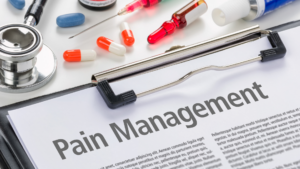
Non-Opioid Treatments for Chronic Pain
Over-The-Counter Pain Relievers
Taking OTC pain relievers may not be the best way to manage your chronic pain, but will help reduce symptoms on a daily basis. Many doctors prescribe Non-Steroidal Anti-Inflammatory Drugs (NSAIDs) for those suffering from chronic headaches, osteoarthritis, or rheumatoid arthritis because these medications help fight pain and inflammation.
Physical Therapy
Patients who suffer from chronic pain are typically unable to maintain a healthy, active lifestyle. This leads to weakened joints and muscles. Physical therapy helps patients build up to their full potential by using low-intensity therapies like hydrotherapy and ultrasound. Once they get used to that routine and intensity, the focus can shift to more targeted exercises for their specific pain. Physical therapy encourages a higher quality of life and helps patients regain mobility.
Acupuncture
This ancient Chinese form of pain management is most often used to help treat back and neck pain, osteoarthritis, and chronic headaches. The needles stimulate a nerve, signaling the brain to release endorphins that act as a natural opioid. By stimulating the nerve that runs from your brain to your colon, inflammation will lower and often reduce the cause of pain.
High-Tech Methods for Managing Your Chronic Pain
With technology, new methods for treating pain are becoming increasingly popular with doctors and patients.
Radiofrequency Ablations
This process uses heat to reduce pain by eliminating communication to the brain. It’s common in patients who suffer from chronic pain in the lower back, neck, and joints. It provides immediate relief and gets the patient back to a restored quality of life in a shorter amount of time.
Spinal Cord Stimulation
Spinal cord stimulation hides the pain signal before it can reach the brain. A small device is surgically implanted under the skin and sends mild electrical currents to the spinal cord. Pain is reduced due to the stimulation modifying the pain signals and redirecting them away from your brain. Patients may sense a tingling sensation instead of pain.
Nerve Block Injections
With the help of an X-Ray, these injections can dampen or block the pain. Nerve blocks help the pain spread to other body parts, by minimizing the signals sent to the brain. Different types of nerve blocks depend on a patient’s pain. Injections can be used to treat painful conditions, determine the source of pain, or to predict the result of treatment.
Physicians are using these non-opioid treatments instead of writing prescriptions. Other therapies that don’t include medication like exercise therapy and cognitive-behavioral therapies (CBT) are gaining popularity. They focus on changing the patient’s attitude and awareness of their pain and teaching coping mechanisms to manage their pain better.
We Can Help
If you suffer from chronic pain, talk to your doctor about these alternative options for treating pain. Progressive Pain Management can help you find the relief you need. Fill out the form below to get started.
Shingles (aka herpes zoster) are rashes that occur in any part of the body. This rash often comes up in people aged 50 and over, causing severe pain. Shingles also appear like blisters on the dermatome’s skin area. But, what exactly causes shingles, and how can we best manage them?
What Causes Shingles?
Shingles is a skin disease caused by the varicella-zoster virus. If you had chickenpox or took its vaccine, you might get shingles. That’s because the shingles vaccine contains chickenpox cells.
Chickenpox may disappear over time. But, the virus lingers in the brain and spinal cord tissues. So, the sleeping virus may reappear as shingles after some years.
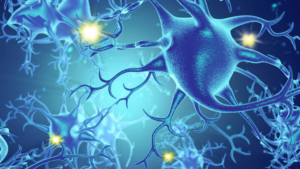
How Shingles Affect the Nervous System
How Do Shingles Reactivate in the Nervous System?
The shingles virus stays dormant in the nerve tissues. If your immune system grows weaker, the virus reactivates.
As the virus becomes active, it spreads through the spinal cord nerves to the skin. These nerves convey messages of pressure, itching, and pain.
These messages transfer from the spinal cord to the brain. Once the varicella-zoster virus gets to the nerve endings, it shows up as a skin rash.
How Do Shingles Affect the Nerves?
As the virus travels along the nerves, it causes severe pain. This occurs even after the rash disappears. Still, many people may no longer feel the pain after two to four weeks.
Common effects of herpes zoster on the nerves include:
Movement Difficulty
Shingles can inflame your motor nerves, which affects muscle movement. As the condition develops, it weakens the muscles around the rash area. About 1 to 5 percent of people with herpes zoster have muscle weakness.
Pain or Postherpetic Neuralgia
Postherpetic neuralgia is an intense pain that lingers after the rashes heal. This condition occurs in about 18 percent of people with shingles. Postherpetic neuralgia disappears within a year, but some never recover.
Facial Nerve Damage
Shingles can also affect the head nerves. Signs of this condition include:
- Dry eyes
- Ear pain
- Tinnitus
- Paralysis on one side of the face
- Issues with taste
- Loss of hearing
- Ear blisters
- Vertigo
Other Common Symptoms of Shingles
Besides pain, other signs of shingles include:
- Fever
- Fatigue
- Numbness
- Itching
- Reddish rash
- Blisters
- Sensitivity to brightness
- High response to touch
- Headache
How to Best Manage Shingles Pain?
Pain from shingles is often intense, but there are things you can do to minimize it. These include:
- Engaging in exercise
- Eating balanced diet
- Regular resting
- Wearing silk or cotton clothing (to reduce irritation)
- Applying ice to the sores
Can Shingles be Treated?
Yes. Vaccination and early treatment can reduce the risk of complications. Failure to treat in time results in postherpetic neuralgia. This condition happens long after the blisters heal.
Getting shingles usually means that your immune system is not in its best condition. A healthy lifestyle like exercise, rest, and balanced diets can help with that.
If you want the best approach to your shingles recovery, fill out this form. Schedule an appointment today so that you can live a pain-free life tomorrow.
Fibromyalgia is a chronic condition characterized by widespread pain, fatigue, and other symptoms. It’s estimated that one in every fifty people will develop the disorder at some point in their lives. But what exactly is fibromyalgia? And how does it affect your body? Let’s take a look at the science behind this mysterious condition.
What is Fibromyalgia?
Fibromyalgia (FM) is a disorder that causes widespread pain throughout the body. The Mayo Clinic describes FM symptoms as “aching, burning or tenderness in your muscles, tendons, and joints”. Fatigue, sleep disturbances, and memory problems are also common. And while most people experience these symptoms on some level, those with FM report that their pain is significantly worse than the reported “average” person.
Although doctors are yet to discover the exact cause of fibromyalgia, most believe it’s likely a combination of physical, psychological, and environmental factors which trigger this disorder. These include genetics (family history), infections, and psychological stress.
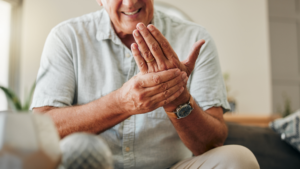
The Science of Fibromyalgia
The Science Behind Fibromyalgia Symptoms
Once you (or someone close to you) is diagnosed with FM it can be difficult to understand how all of your symptoms can be related. After all, what do “muscle tenderness” and “insomnia” have in common? Well, it turns out there are several physiological factors that could play a role in these seemingly unrelated conditions.
Muscle Tenderness
Studies have indicated that a dysfunction of the central nervous system plays an important role in pain perception for those diagnosed with FM. While it’s not known why this occurs, one popular theory suggests that certain systems within the brain “malfunction”, causing them to send out amplified signals of pain to other parts of the body.
Sleep Disturbances
As for sleep disturbances, studies have suggested that dysfunction within serotonin may play a role in FM symptoms. Serotonin is thought to influence arousal and sleep, and those diagnosed with this disorder often have low levels of serotonin. While certain drugs are currently being used to boost levels of this neurotransmitter, more research is needed to understand the complex role serotonin plays in this condition.
Psychological Factors
In addition to these physiological factors, psychological factors often play a significant role in FM symptoms. In fact, it’s estimated that over 95% of those diagnosed with fibromyalgia also suffer from some form of depression or anxiety. And while it’s difficult to determine whether these disorders cause fibromyalgia or vice versa, it’s likely that they interact with one another in a “vicious cycle” of symptoms.
Fibromyalgia Diagnosis
While there is no single test for fibromyalgia, your doctor will likely perform a variety of tests to rule out other conditions before diagnosing you with this disorder. The process can often be lengthy – it’s not uncommon for a patient to visit their doctor several times and undergo multiple tests before receiving an official diagnosis.
For example, your medical history will likely be considered as well as your symptoms. Along with these questions, your doctor may test reflexes and muscle strength, check your joints for signs of swelling, measure your body temperature and also check blood levels of various hormones.
Treatment of Fibromyalgia
Once fibromyalgia has been diagnosed it can sometimes be challenging to treat. While some individuals find relief with medication and lifestyle changes there is no “cure” for this disorder. However, by understanding the underlying cause of your symptoms, you can identify triggers and make changes to reduce them.
Some lifestyle changes that may help include exercise, stress management, diet changes, and appropriate medication.
Exercise
Exercise has been shown to decrease fatigue associated with fibromyalgia while also reducing pain. It’s also thought that regular exercise helps combat the impact of depression on your body. Depending on the severity of your condition, you should consult your doctor before engaging in a new exercise routine.
Stress Management
Stress management is another important aspect of fibromyalgia treatment as stress can exacerbate symptoms. While this isn’t always easy, there are several strategies you can use to reduce your stress including relaxation exercises, meditation, and deep breathing.
Dietary Changes
Diet changes may also help. In some cases, certain foods may worsen symptoms as well as interact with medications you take to relieve fibromyalgia. Common food triggers include wheat, dairy, alcohol, caffeine, and sugar. It’s also important to avoid foods that have been artificially sweetened or that contain red dye #40 – these can cause a wide variety of adverse reactions for those diagnosed with this disorder.
Medication
In addition to dietary changes, medications may be prescribed to help combat sleep disturbances and pain. In particular, sleep aids can often help improve the quality of your shut-eye. Medications may also be employed for temporary relief from pain, while antidepressants can decrease symptoms associated with depression or anxiety.
Conclusion
While there’s no cure for fibromyalgia, by taking the appropriate steps to address symptoms, you can improve your quality of life. With the help of your doctor, you’ll be able to identify triggers and craft a plan that can assist you in coping with this chronic condition.
Rotator cuffs are a group of tendons and muscles that allow your shoulder mobility. These cuffs also help in stabilizing your shoulder. Additionally, rotator cuff injuries vary greatly from one another, and the symptoms may also vary.
Some of the most common injuries may include bursitis, rotator cuff strains, and tendinitis. These injuries can range from severe to mild. If you’re an athlete or a sportsperson who uses their rotator cuff quite frequently, then the most likely injury you may get is tendinitis. That’s because overuse of these muscles and tendons can lead to inflammation. Most basketball players, tennis players, and painters fall in this category.

How to Treat Rotator Cuff Injuries
You may experience rotator cuff strain from accidents, falls, and other sudden movements. Typically, most acute injuries involving the shoulder can lead to a partial tear or even a complete one in the tendons. Moreover, overuse can also cause this type of strain.
As for bursitis, this is inflammation in the bursa. These fluid- filled sacs between your bones and tendons can be inflamed for various reasons, including degenerative use.
Can You Treat a Rotator Cuff Tear or Strain at Home?
Home remedies can help you get relief from rotator cuff strain. However, it’s still important to visit your doctor if your symptoms persist for longer than a week. Your physician can help determine the severity of the injury, the type of rotator cuff injury and come up with the right prescriptions for you. The most common solutions are:
- Using over-the-counter medication for pain
- Using an ice pack on the area (hot packs are good too)
- Using a sling to avoid motion on the shoulder and resting it
- Injecting cortisone to reduce inflammation
- Exercising the affected shoulder
You should also note that depending on how bad the injury is, you may need surgery. However, the timing of the surgery will not necessarily affect the outcome.
What Are the Symptoms to Look Out For?
As mentioned before, while some types of rotator cuff injuries are generally characterized by immediate and intense pain, some may take longer to manifest. You may have a tear without even knowing it until it gets worse. Even so, there are tell-tale signs of such injuries. They include:
- Difficulties with moving the affected shoulder due to pain
- Difficulties in sleeping or lying on the affected shoulder
- Trouble reaching the back of your shoulder
- Pain in the area from time to time
- Inability to use full range motion of your shoulder
- Weakness in the shoulder which gets worse over time
Can You Prevent a Rotator Cuff Injury?
Injuries caused by an acute injury cannot easily be prevented as a most result from accidents. However, it’s possible to prevent other forms of injuries by exercising your shoulder frequently to improve its range of motion or simply strengthen it. You can also try taking frequent rest breaks if your occupation involves overusing your shoulder muscles.
Final Thoughts
Rotator cuff injuries can sometimes lead to excruciating pain. Although home remedies and preventive measures can help ensure you don’t strain your tendons, sometimes surgical intervention is necessary to help correct the tear. For more information, feel free to fill out the form below.


